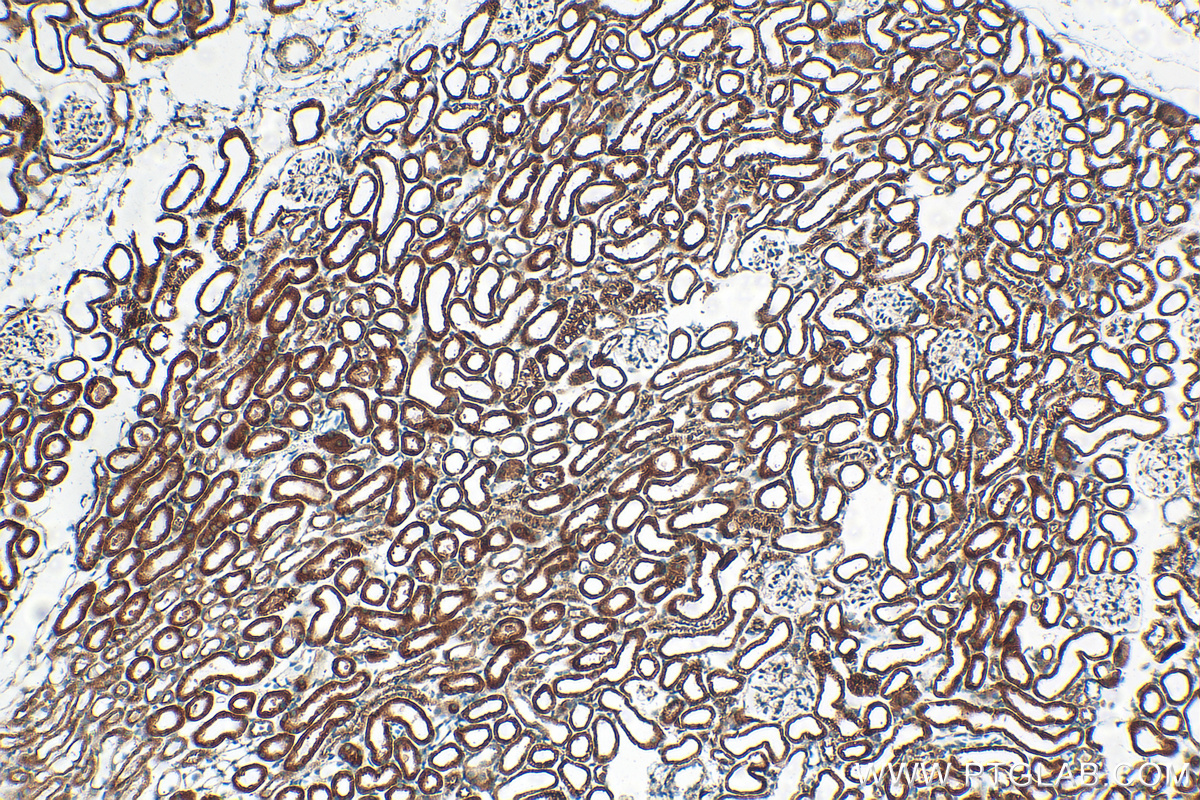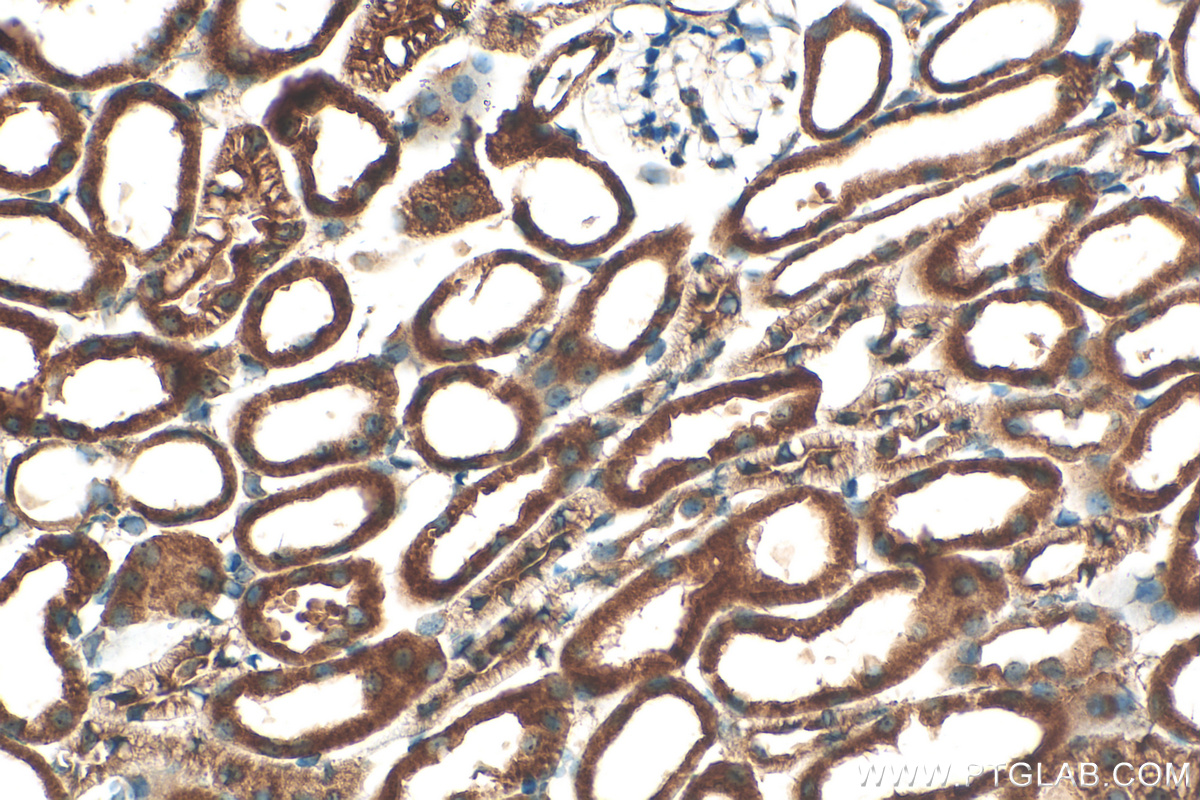Serpina3g Polyclonal antibody
Serpina3g Polyclonal Antibody for IHC, ELISA
Host / Isotype
Rabbit / IgG
Reactivity
mouse
Applications
IHC, ELISA
Conjugate
Unconjugated
验证数据展示
经过测试的应用
| Positive IHC detected in | mouse kidney tissue Note: suggested antigen retrieval with TE buffer pH 9.0; (*) Alternatively, antigen retrieval may be performed with citrate buffer pH 6.0 |
推荐稀释比
| Application | Dilution |
|---|---|
| Immunohistochemistry (IHC) | IHC : 1:50-1:500 |
| It is recommended that this reagent should be titrated in each testing system to obtain optimal results. | |
| Sample-dependent, Check data in validation data gallery. | |
产品信息
55353-1-AP targets Serpina3g in IHC, ELISA applications and shows reactivity with mouse samples.
| Tested Applications | IHC, ELISA Application Description |
| Tested Reactivity | mouse |
| Immunogen | Peptide 种属同源性预测 |
| Host / Isotype | Rabbit / IgG |
| Class | Polyclonal |
| Type | Antibody |
| Full Name | serine (or cysteine) peptidase inhibitor, clade A, member 3G |
| Synonyms | 2A2, AI119734, Serpina3g, spi2, Spi2 1, Spi2/eb.1, Spi2A |
| Calculated Molecular Weight | 49 kDa |
| GenBank Accession Number | NM_009251 |
| Gene Symbol | Serpina3g |
| Gene ID (NCBI) | 20715 |
| RRID | AB_3086441 |
| Conjugate | Unconjugated |
| Form | Liquid |
| Purification Method | Antigen affinity purification |
| UNIPROT ID | Q5I2A0 |
| Storage Buffer | PBS with 0.02% sodium azide and 50% glycerol pH 7.3. |
| Storage Conditions | Store at -20°C. Stable for one year after shipment. Aliquoting is unnecessary for -20oC storage. |
背景介绍
Serpina3g was predicted to enable serine-type endopeptidase inhibitor activity. Acts upstream of or within response to cytokine and response to peptide hormone. Predicted to be located in cytoplasm and nucleus. Serpina3g was predicted to be active in extracellular space. Human ortholog(s) of this gene implicated in chronic obstructive pulmonary disease; cystic fibrosis; and vasculitis
实验方案
| Product Specific Protocols | |
|---|---|
| IHC protocol for Serpina3g antibody 55353-1-AP | Download protocol |
| Standard Protocols | |
|---|---|
| Click here to view our Standard Protocols |

